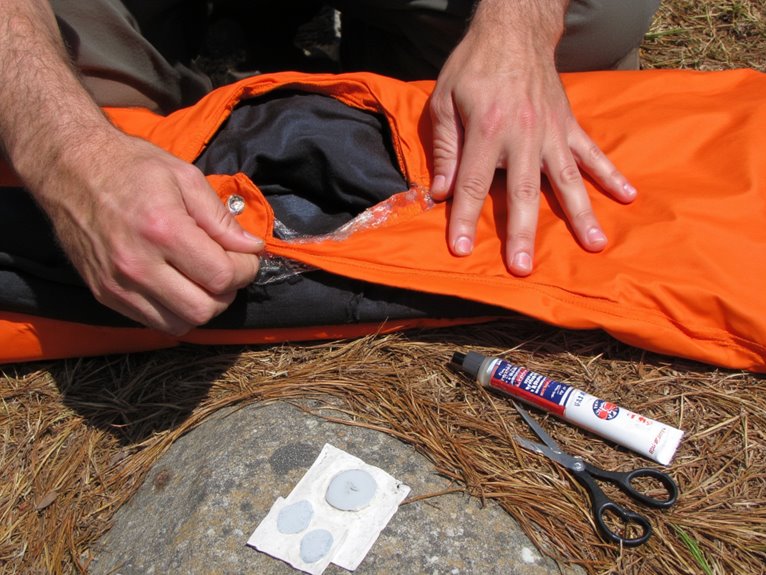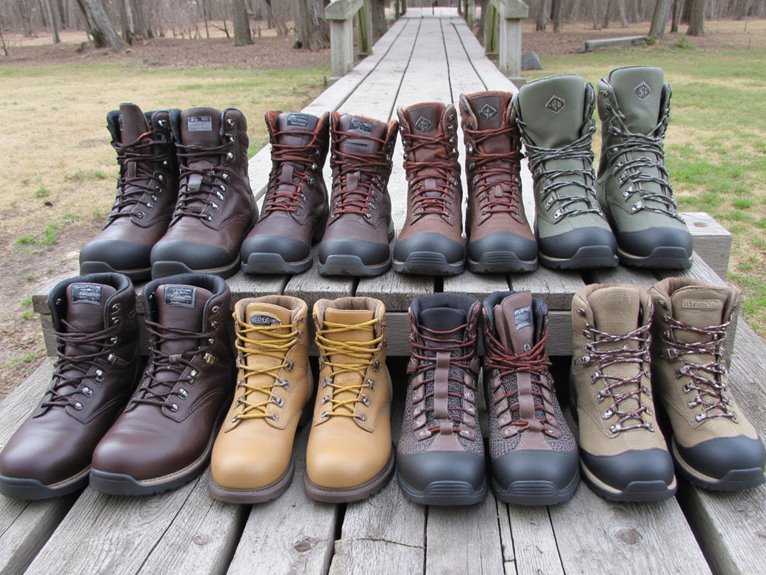What Is an Avalanche Rescue Backpack?
An avalanche rescue backpack is a specialized backpack designed to carry essential equipment for avalanche rescue and response. It prioritizes accessibility, durability, and strategic organization to facilitate swift and effective rescue operations. Key components include a probe, shovel, first aid kit, communication device, navigation tool, and emergency shelter items. Built with durability and accessibility in mind, these backpacks facilitate quick access to critical rescue tools. As you venture into the world of avalanche rescue, understanding the intricacies of these backpacks and their components is vital for effective response and rescue efforts.
We are supported by our audience. When you purchase through links on our site, we may earn an affiliate commission, at no extra cost for you. Learn more. Last update on 28th December 2025 / Images from Amazon Product Advertising API.
Key Components of a Rescue Backpack
A thorough avalanche rescue backpack typically comprises several essential components, each serving a critical function in facilitating a successful rescue operation.
The backpack should include a probe, which is a collapsible pole used to pinpoint the location of a buried person.
A shovel is also a fundamental component, enabling the rescue team to dig out the victim quickly and efficiently.
Additionally, a first aid kit should be included, providing essential medical supplies in case of injuries.
A communication device, such as a two-way radio, is also essential for coordinating the rescue effort.
How It Differs From a Standard Backpack
Its unique configuration and specialized contents distinguish an avalanche rescue backpack from a standard backpack, designed for recreational activities or daily use.
The rescue backpack is specifically designed to carry essential rescue equipment, such as a probe, shovel, and first aid kit, which are not typically found in standard backpacks.
Additionally, the rescue backpack is built with durability and accessibility in mind, featuring compartments and pockets that allow for quick and easy access to critical rescue tools.
In contrast, standard backpacks prioritize comfort, style, and storage capacity over functionality and rescue-specific features.
This distinct design and content make the avalanche rescue backpack an indispensable tool for rescue teams and individuals responding to avalanche emergencies.
Importance of Strategic Organization
Strategic organization is vital in an avalanche rescue backpack, as it facilitates responders to quickly access critical gear in high-pressure situations.
A well-designed pack guarantees that essential tools are easily reachable, saving precious time and reducing the risk of accidents.
Gear Accessibility Matters
In high-pressure rescue situations, every second counts, and easy access to vital gear can be the difference between life and death.
A well-organized avalanche rescue backpack guarantees that responders can quickly locate and deploy essential tools, such as probes, shovels, and first aid kits.
Strategic gear placement and clever storage solutions facilitate efficient access to vital equipment, minimizing delays and maximizing response times.
By thoughtfully arranging gear, responders can maintain focus on the rescue effort, rather than wasting precious time searching for buried or hard-to-reach equipment.
Efficient Pocket Layout
A well-designed pocket layout is critical to swift gear retrieval, as it facilitates swift access to essential tools in high-pressure rescue situations.
A thoughtfully organized backpack guarantees that critical items are easily accessible, reducing response time and increasing efficiency.
Strategic pocket placement allows responders to instinctively reach for necessary gear, even in low-visibility conditions.
This deliberate design approach streamlines the rescue process, enabling responders to focus on the task at hand.
Essential Items to Include Inside
When assembling an avalanche rescue backpack, it is crucial to prioritize the inclusion of essential items that can mean the difference between life and death.
The most critical components to include are life-saving essentials, a probe and shovel kit, and emergency shelter items, all of which play a vital role in responding to avalanche emergencies.
Life-Saving Essentials
Every avalanche rescue backpack should contain a carefully curated selection of life-saving essentials that can substantially improve the chances of survival in the event of an emergency.
These items should be carefully chosen to address the specific needs of avalanche rescue situations.
First aid kit with supplies for treating wounds and stabilizing injuries.
Emergency shelter and warmth, such as a lightweight tent and warm blanket.
Communication devices, including a two-way radio and whistle.
Navigation tools, including a compass and GPS device.
High-energy food and water to sustain the victim until help arrives.
Probe and Shovel Kit
A well-stocked avalanche rescue backpack should always include a probe and shovel kit, comprising a collapsible probe and a sturdy, lightweight shovel designed for efficient excavation in deep snow.
The probe, typically made of durable aluminum or carbon fiber, allows for quick and accurate detection of buried individuals.
The shovel, often made of lightweight yet robust materials, enables rapid digging and excavation.
A quality probe and shovel kit is essential for effective avalanche rescue, as it enables responders to quickly locate and extract buried individuals.
When selecting a probe and shovel kit, consider factors such as durability, weight, and compactness to facilitate efficient and effective rescue operations.
Emergency Shelter Items
A well-equipped avalanche rescue backpack should also contain essential emergency shelter items to provide a safe and warm environment for survivors, helping to prevent further harm or exposure.
These items are vital in keeping individuals warm and protected from the elements until rescue or further assistance arrives.
- Space blanket or emergency bivvy sack
- Insulating sleeping pad or foam mat
- Emergency shelter, such as a lightweight tent or tarp
- Warm hat and gloves
- Fire starting equipment, such as matches or a lighter
Benefits of a Pre-Assembled Kit
Rapidly deploying a rescue response is vital in avalanche situations, and a pre-assembled kit guarantees that all necessary equipment is readily available.
This eliminates the need to gather and prepare individual items, saving precious time in emergency situations.
A pre-assembled kit also certifies that nothing is forgotten or overlooked, reducing the risk of critical omissions.
In addition, having all necessary equipment in one place simplifies the rescue process, allowing responders to focus on the rescue itself rather than searching for equipment.
Understanding Avalanche Rescue Protocols
Effective avalanche rescue protocols rely on a deep understanding of the rescue process, from initial response to final recovery, to facilitate that responders can execute a successful rescue operation.
This includes a clear comprehension of the rescue sequence, from initial alert to victim transportation.
A well-structured protocol guarantees that responders prioritize tasks, allocate resources efficiently, and minimize delays.
Key elements of avalanche rescue protocols include:
- Rapid scene assessment and hazard evaluation
- Effective communication and coordination among team members
- Strategic deployment of rescue equipment and resources
- Systematic search and rescue techniques
- Timely provision of medical care and transportation
Training and Practice for Effective Use
Proper training and regular practice are essential components of mastering the avalanche rescue backpack, as they help build the necessary skills and confidence to execute rescue operations efficiently and safely.
A well-structured training program should cover topics such as avalanche safety, rescue techniques, and backpack operation.
Practicing with the backpack in different scenarios and environments helps to develop muscle memory and instinctive responses.
Regular drills and simulations can also identify areas for improvement and reinforce best practices.
Staying up-to-date with the latest techniques and guidelines is vital, as avalanche rescue protocols continually evolve.
Choosing the Right Backpack for You
When selecting an avalanche rescue backpack, it is vital to evaluate several key factors, including the type of terrain you will be operating in, the number of people in your response team, and the specific features that align with your rescue protocols.
To ensure you choose the right backpack for your needs, consider the following key considerations:
- Weight and size: Balance the need for a lightweight pack with the requirement for sufficient storage space.
- Material and durability: Select a pack made from durable, weather-resistant materials that can withstand harsh conditions.
- Compartments and organization: Opt for a pack with dedicated compartments and organization systems to keep gear easily accessible.
- Comfort and ergonomics: Choose a pack with padded straps and a comfortable fit to reduce fatigue during extended use.
- Budget and brand reputation: Set a budget and research reputable brands offering high-quality, reliable packs.
Maintenance and Inspection Best Practices
Regular scrutiny and meticulous upkeep are essential to maintaining the reliability and functionality of your avalanche rescue backpack, as even the most high-quality gear can deteriorate over time.
A thorough inspection should be conducted before each use, focusing on the condition of the pack, straps, buckles, and zippers. Check for signs of wear, fraying, or damage, and repair or replace components as needed.
Store the backpack in a dry, cool environment, away from direct sunlight, to prevent material degradation. Additionally, follow the manufacturer's cleaning and maintenance guidelines to preserve the pack's water resistance and overall integrity.




